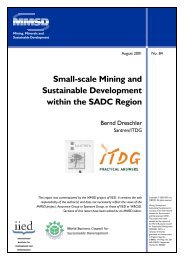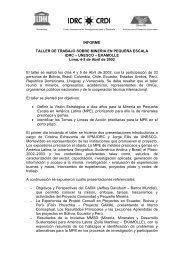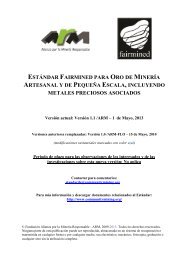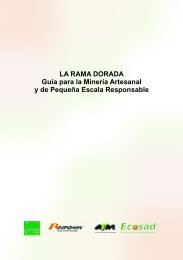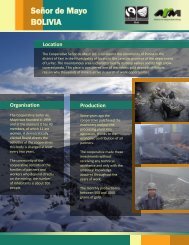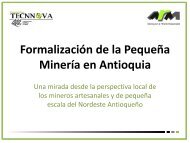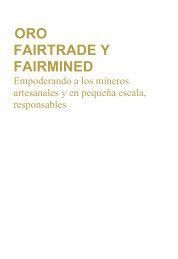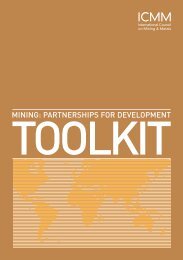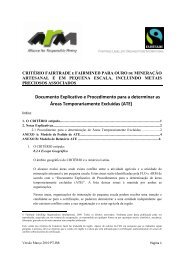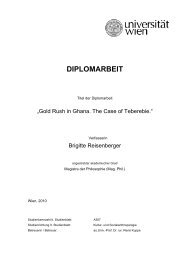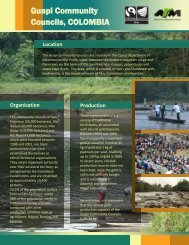A Poisonous Mix - Human Rights Watch
A Poisonous Mix - Human Rights Watch
A Poisonous Mix - Human Rights Watch
Create successful ePaper yourself
Turn your PDF publications into a flip-book with our unique Google optimized e-Paper software.
thirds of child laborers surveyed in Malian artisanal mines are migrants. 187 A regional<br />
survey about artisanal mining found that 10 percent of child laborers in artisanal mines in<br />
Guinea, Mali, and Burkina Faso were foreigners from other West African countries who<br />
lived in the mines without their parents. 188<br />
During our research, we met several children who were victims of exploitation and whose<br />
situations might have amounted to trafficking. One was Boubacar S., 14, from Sensoko, in<br />
the Kéniéba area, whose situation is described above. 189 He was living with guardians who<br />
treated him “as if I am not a human being.” They forced him to work in artisanal mining<br />
and brick making. His parents were gold miners who moved to another gold mine in Mali;<br />
they were not in contact with him. 190<br />
<strong>Human</strong> <strong>Rights</strong> <strong>Watch</strong> also interviewed children from Burkina Faso and Guinea who might<br />
have been victims of trafficking. Salif E., 15, was sent from Burkina Faso to Mali by his<br />
parents, and travelled to Worognan mine with two other boys who were relatives. They<br />
were accompanied by the head of the Burkinabe community, who was Salif’s uncle, and<br />
they also worked for him. 191 When we interviewed Salif, he had been in the mine for about<br />
three weeks and had not yet been paid.<br />
Leaders of migrant communities play a key role in organizing life of the foreign mining<br />
workers. 192 The head of the Burkinabe community in Worognan, Salif E.’s uncle, explained<br />
that around 60 persons were working for him. A local gold trader confirmed that he<br />
employed several children. 193<br />
Coercion<br />
The majority of children in child labor dislike the work they do, but do it to help their<br />
parents, according to a recent survey. 194 Even when children are not victims of trafficking,<br />
they often experience a degree of coercion when working in artisanal mining. The decision<br />
to send children to work in the mines—whether by themselves, with the family, or other<br />
187 ILO, “Etude transfrontalière sur le travail des enfants dans l’orpaillage,” pp. 34-35.<br />
188 Save the Children, “Recherche sur les enfants travailleurs,” pp. 37-38.<br />
189 See subsection on pay.<br />
190 <strong>Human</strong> <strong>Rights</strong> <strong>Watch</strong> interview with Boubacar S., estimated age 14, Sensoko, April 4, 2011.<br />
191 <strong>Human</strong> <strong>Rights</strong> <strong>Watch</strong> interview with Salif E., age 15, Worognan, April 9, 2011.<br />
192 ILO, “Etude transfrontalière sur le travail des enfants dans l’orpaillage,” p. 60.<br />
193 <strong>Human</strong> <strong>Rights</strong> <strong>Watch</strong> interview with head of Burkinabe community, Worognan, April 9, 2011; <strong>Human</strong> <strong>Rights</strong> <strong>Watch</strong><br />
interview with gold trader, Worognan, April 9, 2011.<br />
194 ILO/IPEC, “Etude CAP”, p. 44.<br />
A POISONOUS MIX 46



